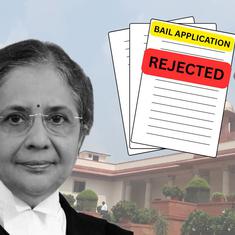Both the announcements drew immediate reaction from Beijing and comments from across the press that Narendra Modi was more than willing to take on China, despite strolling the banks of the Sabarmati with its president earlier in the year. But much of the commentary missed two developments, both of which could go a long way in explaining how Modi’s foreign policy approach is shaping up.
“Since entering office, my government has promptly and purposefully intensified our engagement in the Asia-Pacific region, which is critical to India’s future,” Prime Minister Narendra Modi said while hosting Dung. “It is no surprise that Vietnam has been at the forefront of our efforts.”
One step back
Hanoi offered two oil blocks in the South China Sea to ONGC Videsh, the overseas arm of India’s state-owned Oil and Natural Gas Corporation. Because the South China Sea is disputed territory that’s been in the news recently as a result of Beijing’s assertiveness, this has been seen as a direct message to China from both the countries. It even evoked a response from the Chinese foreign ministry:
"Any lawful and justifiable exploration activity is fine by us. But if such activity undermines the sovereignty of China and interests of China, we are firmly opposed to this,” a spokesperson for the foreign ministry said. “[China] wishes that all countries can do more things that are conducive to peace and stability in the South China Sea.”
The latter portions of this statement inspired most of the commentary and concern, but the first sentence is also significant. China insisted that it has no problems with any “lawful and justifiable” exploration in the South China Sea. A careful look at India’s moves here actually represents steps towards coming in line with what Beijing would consider lawful.
Both the new blocks that Hanoi offered ONGC Videsh are outside the portions of the South China Sea that Beijing claims. Moreover, the deal to pick up those two blocks was accompanied by New Delhi reducing its stake in the one ONGC Videsh block that does sit in disputed territory.
The state oil firm had in 2012 claimed that it wouldn’t be viable to extract oil from Block 128, which comes under the area that China disputes, and so said that it would look to give up its 100% stake in the block. Right afterwards, though, thanks to pressure from Hanoi and the Indian ministry of external affairs, ONGC said it would be holding on to the block.
Last week, alongside the stakes ONGC picked up in the two new blocks, the leaders also announced that PetroVietnam, Hanoi’s state-owned oil firm, would take half the stake that India has in Block 128. Far from attempting to provoke Beijing here, it turns out India is actually reducing the risk of conflict with China over its oil exploration in the South China Sea.
One quiet step forward
While India might be attempting to reduce its exposure to risk on the economic and oil exploration front, it appears to be going the opposite way when it comes to defence ties with Hanoi. The headline item was, of course, the $100 million line of credit, which comes with four naval vessels that Vietnam is expected to use in patrolling the South China Sea. India is also going to increase its efforts to modernise the Vietnamese military.
But no mention was made, on the record at least, of the one thing that Hanoi has been demanding for some time now: the BrahMos anti-ship cruise missile. Any transfer of this technology would seriously upgrade Vietnam’s ability to counter threats in its backyard and give it more leverage against China.
For these reasons, New Delhi has always been reluctant to transfer weapons technology, especially since the BrahMos is capable of carrying a nuclear warhead. In the past, it has resorted to saying that it can’t offer the BrahMos to Hanoi because Russia, which co-developed the technology, had objected.
Although there was no official talk about this demand at all, the tenor of discussions about the missile seem to have changed.
New Delhi is working hard to get into the Missile Technology Control Regime, a club of countries that have missiles that have ranges of 300 km and more. With the United States now backing India’s bid to enter, New Delhi is on the verge of joining, a move that would open up avenues for it to receive expertise and technology transfers from other countries within the Missile Technology Control Regime.
Russia's objections
Once that is through, India would be even better placed to offer this technology to Hanoi. The other obstacle, Russia’s objection, seems to have been sorted out.
“The difference with the onset of the Modi dispensation was that India rather than merely seeking Russian assent for the transfer of this cruise missile to Vietnam pushed for it,” writes Bharat Karnad, a professor at the Centre for Policy Research. “Indeed, the MEA and the ministry of defence bureaucrats, who in line with the Congress government’s instincts for kowtowing to Beijing routinely vetoed initiatives over the past decade by the armed forces to improve India’s relative security position vis-a-vis China by using transfers of armaments and forging military-to-military links, are now more receptive.”
For the hawks in the establishment it also raises hopes that Modi will do what many, including Karnad, have long called for: using Vietnam as a deterrent to China in the way Beijing used Pakistan. Although actual technology transfer would be some time away, the opening up of talks on the matter happens to be a much more significant subject than most of the items that made it onto the talking points memos of both the prime ministers after last weeks’ visit.










